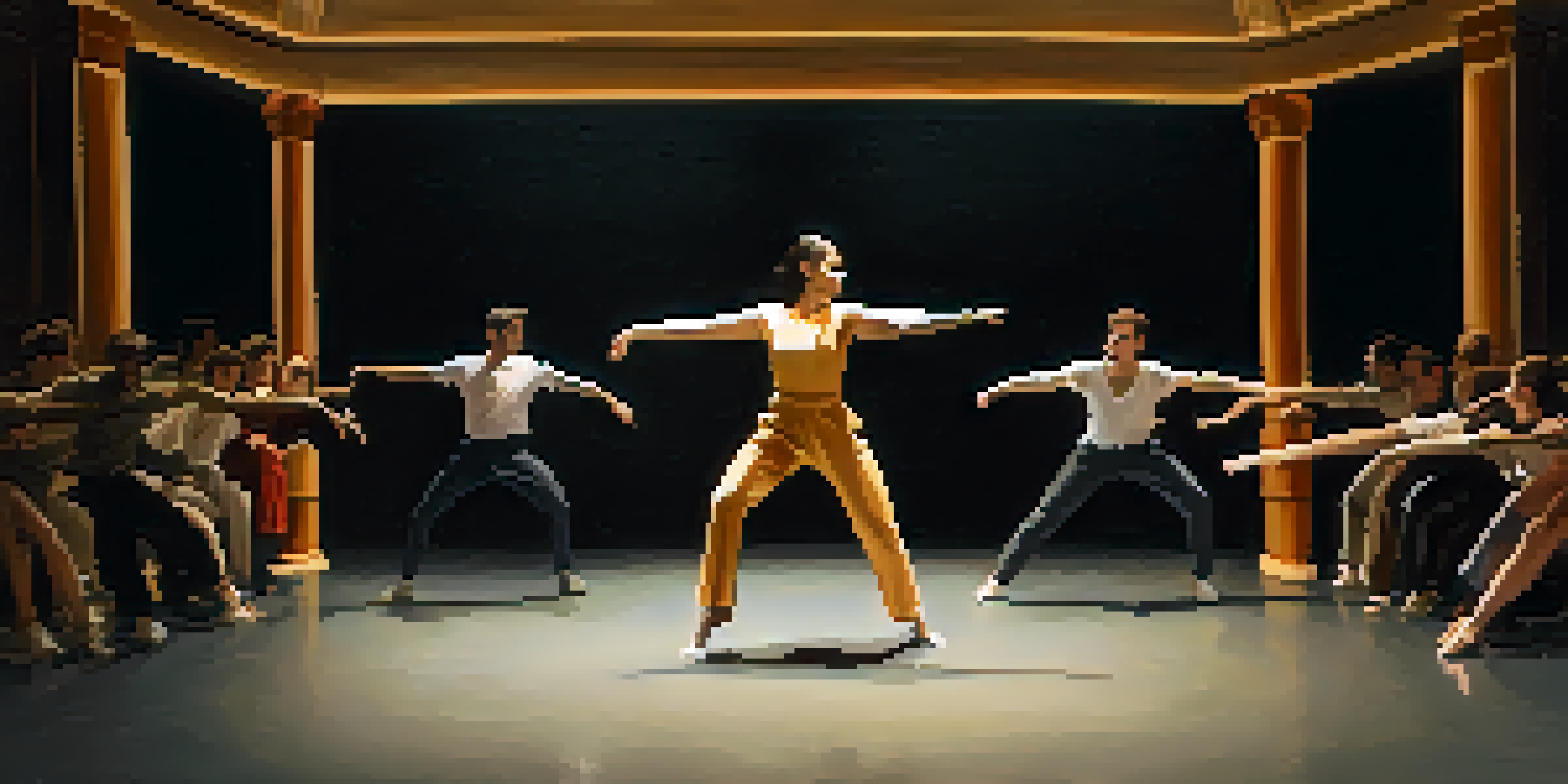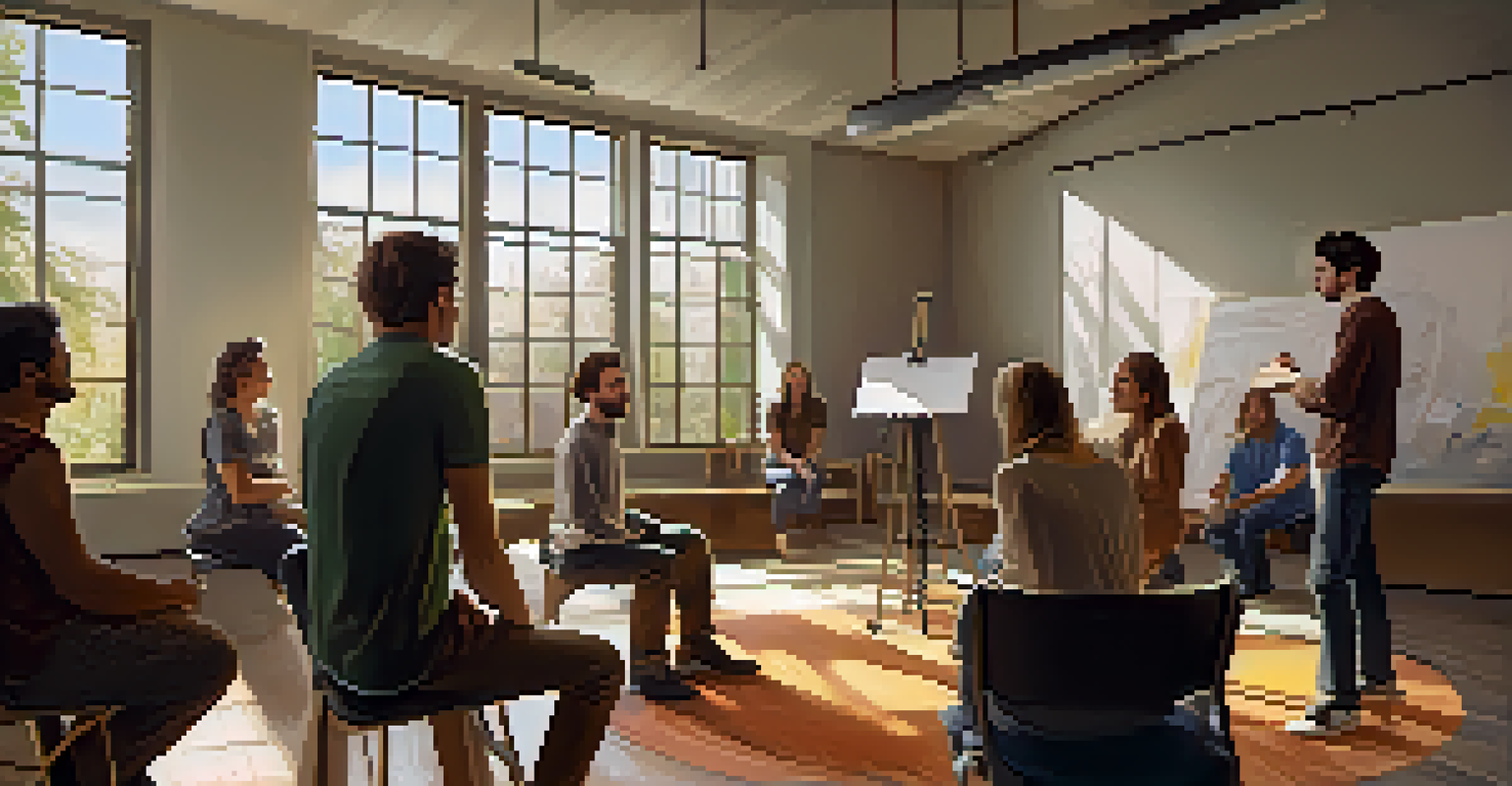The Michael Chekhov Technique: Imagination Meets Movement

Understanding the Michael Chekhov Technique
The Michael Chekhov Technique is a unique approach to acting that emphasizes the use of imagination and physical movement. Developed by Russian actor and director Michael Chekhov, it encourages performers to tap into their inner creativity. Unlike traditional methods that focus heavily on emotional memory, this technique prioritizes the actor's imaginative capabilities as a vital tool for character development.
The body says what words cannot.
At its core, this technique suggests that movement and imagination are interconnected. By visualizing their character and the world they inhabit, actors can bring authenticity to their performance. Chekhov believed that imagination could unlock new dimensions of expression, allowing actors to explore their roles more deeply.
For instance, imagine an actor preparing for a role as a fierce warrior. Instead of merely recalling personal experiences of anger or determination, they might visualize the warrior’s journey, embodying that character’s physicality through specific movements. This approach not only enhances performance but also fosters a richer narrative experience.
Imagination as a Foundation for Movement
In the Chekhov Technique, imagination serves as the backbone for physical movement. Actors are encouraged to visualize their character's traits, emotions, and environment to inform their movements. This imaginative process creates a more organic connection between the actor and the role they are portraying.

By engaging the imagination, actors can discover unique ways to express their characters’ inner worlds. For example, a character who is anxious might move with quick, erratic gestures, while a confident character might have more grounded, fluid movements. This correlation between thought and action allows for a dynamic and impactful performance.
Imagination Drives Movement
The Chekhov Technique emphasizes the connection between imagination and physical movement, allowing actors to embody their characters authentically.
Moreover, the technique invites actors to experiment with their physicality by using different imaginative exercises. These can include visualizing objects or environments that inspire specific movements, fostering a deeper relationship with the character’s narrative.
The Role of Body Awareness and Energy
Body awareness is a crucial aspect of the Chekhov Technique. Actors learn to recognize their physical sensations and how these relate to their character’s emotions and intentions. This awareness enhances their ability to portray their roles authentically, as they become more attuned to how their body expresses various feelings.
Imagination is the beginning of creation. You imagine what you desire, you will what you imagine and at last, you create what you will.
Energy dynamics also play an essential role in this technique. Chekhov believed that different characters possess varying levels of energy, which can be communicated through movement. For instance, a character with a high energy level might engage in vigorous, expansive movements, while a more subdued character might exhibit minimal, contained gestures.
By honing their energy and body awareness, actors can create a more nuanced performance. This technique empowers them to shift their physicality in alignment with their character's emotional state, leading to a more compelling narrative.
Utilizing Psychophysical Exercises
Psychophysical exercises are foundational to the Chekhov Technique, blending psychological and physical practices. These exercises encourage actors to explore their imagination while simultaneously engaging their bodies. By combining the mind and body, performers can unlock new ways to connect with their characters.
For example, one common exercise involves having actors visualize a character’s qualities while simultaneously embodying those traits through movement. This practice allows them to grasp the essence of their character, leading to a more authentic portrayal. The integration of imagination with physicality creates a holistic approach to acting.
Body Awareness Enhances Performance
By developing body awareness and energy dynamics, actors can create nuanced performances that reflect their character's emotional states.
These exercises can also include improvisation, where actors are prompted to respond to imaginative scenarios physically. This spontaneity fosters creativity and encourages performers to break free from conventional approaches, paving the way for innovative character interpretations.
The Importance of Atmosphere and Space
In the Chekhov Technique, atmosphere and spatial awareness are vital elements that influence an actor's performance. Chekhov emphasized that understanding the environment can significantly enhance character portrayal. By being aware of how space affects their movements, actors can create a more immersive experience for the audience.
For instance, consider an actor portraying a character in a vast, open landscape. By visualizing that space, they might adopt expansive movements that reflect the freedom of the surroundings. Alternatively, in a confined setting, their movements may become more restricted, mirroring the character's emotional state.
This awareness of atmosphere encourages actors to interact with their environment meaningfully. By adapting their movements to the space around them, they not only enrich their performance but also invite the audience into the world of the character.
Fostering Creativity and Collaboration
The Chekhov Technique promotes creativity not just for the individual actor but within the entire ensemble. By embracing imagination as a collective tool, actors can develop a stronger sense of collaboration. This shared creative process fosters an environment where ideas flow freely, enhancing the overall production.
In a rehearsal setting, for example, actors can use improvisational techniques to explore different relationships between characters. This collaborative approach allows each performer to contribute their imaginative insights, resulting in richer, more dynamic scenes. The emphasis on group creativity encourages a sense of unity among the cast.
Creativity Through Collaboration
The technique fosters a collaborative environment, encouraging actors to share imaginative insights that enrich the overall production.
Moreover, this technique allows actors to inspire one another through their unique interpretations. By sharing imaginative exercises and discoveries, performers can expand their understanding of their characters and the story being told, leading to a more cohesive and compelling production.
Applying the Technique in Contemporary Theatre
The Michael Chekhov Technique remains relevant in contemporary theatre, offering tools that resonate with modern actors and directors. Many practitioners incorporate its principles into their work to foster creativity and deepen character exploration. This technique encourages a fresh perspective in a landscape often dominated by traditional methods.
For instance, contemporary theatre companies often use Chekhov’s exercises to enhance ensemble dynamics and promote innovative storytelling. By blending imagination with movement, actors can explore new interpretations of classic texts or develop original works that challenge the status quo.

As the world of theatre continues to evolve, the Chekhov Technique provides a timeless framework for actors seeking to push their boundaries. Its focus on imagination and movement allows performers to adapt to various styles and genres, making it a valuable asset in today’s diverse theatrical landscape.